3D printing uses multiple manufacturing techniques to build each layer of an object with precision. The finish and physical properties of the end product can be modified through the material and technique used, manufacturing speed, cost, and durability.
Gone are the days when businesses would have to wait weeks before getting a customized part to test a new product. Modern manufacturing processes use 3D printing to deliver quicker results so that companies can test prototypes daily to reduce problems down the road.
Today’s guide looks at the most popular 3D printing techniques suitable for small-scale and large-scale tasks. We will also discuss several cost-effective methods to improve production practices.
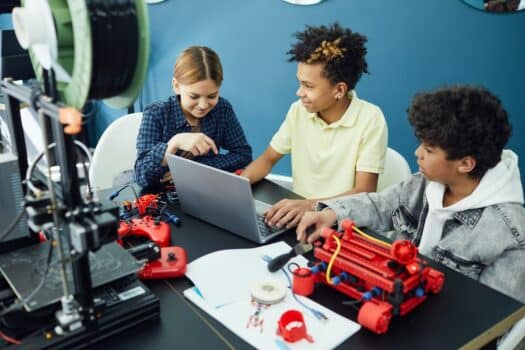
What Are 3D Printers?
A 3D printer uses computer-aided design models (CAD) to create 3D designs of various parts through additive manufacturing technology. It can deliver rough surface finishes, a solid layer, or other designs as the 3D printer builds each layer before moving to the next.
Usually, one layer’s thickness differs from the next, and the printer repeats this process until the entire object is complete.
3D printing has been around since the 1980s, as you will find out when we will discuss the types of 3D printing. But it has become more popular in recent times, thanks to innovations in machinery, software, materials, and various businesses. This has made the latest manufacturing techniques and the best 3d printers out there accessible to all companies, not just the big players with high-tech infrastructure.
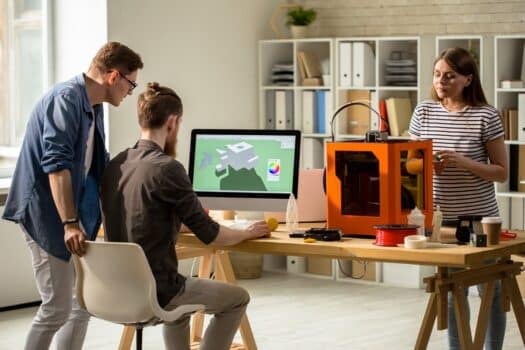
Some of the major industries that use low-cost, accessible, and professional 3D printers for innovation include –
- Architecture
- Healthcare
- Engineering
- Audiology
- Education
- Dentistry
- Manufacturing
- Jewelry
- Entertainment
How Do 3D Printers Work?
The first step in all 3D printing techniques is sending the CAD model to software for getting the design ready. Based on the printing technique, a 3D printer creates each layer by sintering the powder or solidifying the liquid resin before removing the parts from the printer.
These parts are further processed according to specific shapes based on the type of application.
A. 3D Printing
There are 3D printers that come with lasers to convert liquid resin into hard plastic. Or you can use models that heat minute polymer powders to high temperatures to fuse various parts. You can start the 3D printer and leave it unattended while the machine completes the printing and refills the material from the cartridge needed for designing the various parts.
B. Design
You must use CAD software, mathematical representations, and 3D scan data to print parts of 3D objects. After that, the design is sent to modern printing software that can interpret OBJ or STL files.
It’s possible to alter the print settings and segregate the digital model into several layers to get a horizontal representation of the parts. Once you’re satisfied, the printer receives specific instructions from the software through a cable or wireless connection.
In most cases, you can alter one or more of the following settings –
- Orientation
- Layer height
- Support structures
- Materials
C. Post-Process
At times, uncured resin remains on the surface after printing, depending on the technology and material you have used. You will need to rinse the parts with isopropyl alcohol in such a scenario while also stabilizing the mechanical parts during the post-curing phase and manually removing support structures.
People also clean the parts with compressed air or use a media blaster to eliminate excess powder trapped on the surface. The good news is that certain accessories allow manufacturers to automate the entire process before directly using the 3D parts or subjecting them to further changes through –
- Fastening
- Machining
- Joining
- Painting
- Priming
But that doesn’t mean 3D printing is separate from other regular manufacturing practices, as the two can be used in conjunction, like –
- Casting jewelry
- Dental equipment
- Custom molds for parts of different shapes
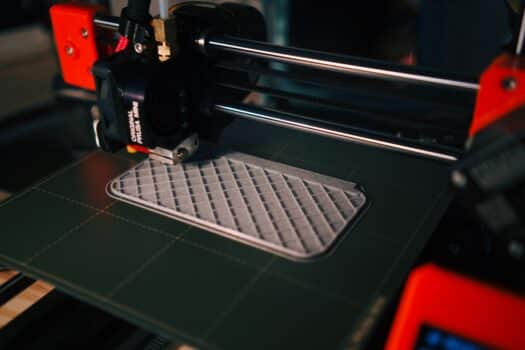
Types Of 3D Printing
Here we have narrowed down the common 3D printing techniques that help create a layered structure and precise replica of most objects.
1. Stereolithography (SLA)
With most businesses using 3D printing for different manufacturing processes and materials, it’s a good time to take you back to where it all started. While 3D printing may seem like a fairly new concept, Chuck Hull made the first 3D printing innovation in 1986.
He introduced the world to Vat Polymerization, a 3D printing technique whereby a photopolymer gun is restored using a light source. From that came stereolithography, popular for delivering details, tight resistances, and smooth surface finishes.
From experience, we can tell you that the quality of surface completions is better than many manufacturing processes, although not as good as the latest techniques. So, where is SLA used? You will likely find this technique in basic manufacturing rather than complex geometries, such as microfluidics, anatomical models, and clinical businesses.
Inside an SLA printer, you will find two mirrors called galvanometers, with one located on the Y-hub and the other on the X-pivot. To understand the reason for this positioning, know that between the laser pillars lies a gum tank for setting up a cross-part of the material and relieving it. In other words, the printer develops the forming layer by creating individual layers.
Benefits Of SLA Printing
The primary benefit of SLA printing is precision in replicating the prototype without taking too long. SLA can recreate objects in a few hours, provided you have proper 3D CAD information by shaping a type of plastic called photopolymers into sturdy 3D objects.
Before printing, the plastic is changed to a semi-fluid structure to solidify after contact. As the Y and X filtering mirrors develop the layers with a bright laser, a sharp recoater edge comes between the surface. This helps bring out the subtleties of the structure by creating each layer one by one.
It happens before the next stage and ensures that a thin layer of gum spreads evenly across every layer to build 3D objects from the bottom up. After completion, objects have a synthetic shower to reduce overabundance, but even then, it’s necessary to post-fix it in a bright broiler.
Most SLA 3D printers consist of iPros 3D printers, ProJets, and Vipers. When done right, objects appear steady and grounded. That’s why SLA printing is common in many businesses, including automobile, aviation, clinical, and diversions, for creating various consumer products.
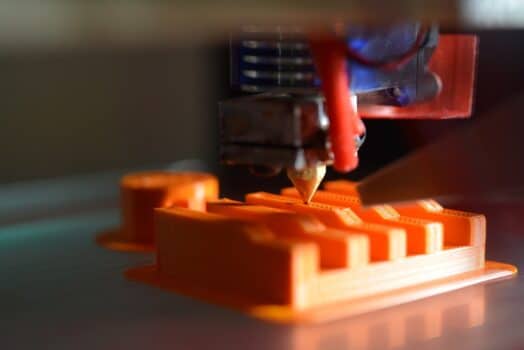
2. Selective Laser Sintering (SLS)
Selective laser sintering creates durable plastics out of nylon-based powders, and the great thing about this technique is that the different parts are made of authentic thermoplastic. As a result, it’s great for practical testing while proving tough to withstand the weight of snap-fits and living pivots.
Compared to other techniques, SLS guarantees that the parts are grounded despite more robust surface completions. Best of all, it doesn’t require help in the forming stage and allows you to settle the different parts into a cohesive, singular structure.
This comes in handy when the part amounts are higher compared to other 3D printing techniques. You can find this technique most commonly in model plants that will later be infusion-shaped.
So, what makes SLS different from other types of 3D printing? The biggest advantage is that it utilizes Power Bed Fusion, which involves warming a container of thermoplastic powder right before its liquefying point. When it reaches the desired point, either a wiper or recoating sharp edge stores a little layer of the powder, not more than 0.1mm thick, during the forming stage.
To start, a laser bar examines the surface to sinter the powder and harden a cross-part of the object. And just like the earlier technique, two galvanizers help keep the laser around the center. Once the cross-segment is filtered, the stage will drop close to one thickness off the layer stature so that the whole circle is rehashed till the object is complete.
You should also know the powder that isn’t sintered helps create the remaining parts holding the object, reducing the need to form support structures. But SLS is fairly simple and doesn’t involve assembling the practical parts, low-run creation, or complex ducting, which requires empty plans.
Benefits Of Selective Laser Sintering
The benefit of SLS 3D printing technology is primarily utilitarian manufacturing aids and manufacturing technologies. This reduces the need for complex calculations or mechanical properties, which are common in other manufacturing processes.
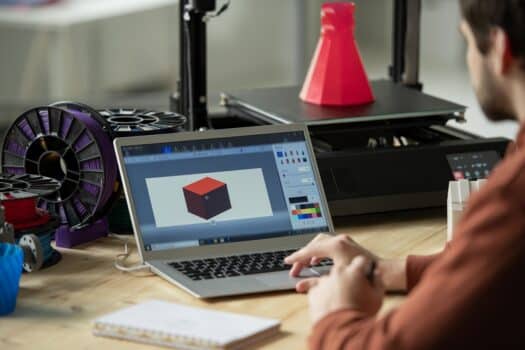
3. Rapid Prototyping
Before explaining rapid prototyping, you should know that SLS needs longer lead times and is much costlier than techniques like Fused Deposition Modeling/Fused Filament Fabrication. That’s where rapid prototyping offers an advantage, especially when you need to create a design for different purposes.
It’s much more pocket-friendly and allows manufacturers to create a single part for their clients, which makes it easier to validate and exchange ideas. But it’s essential to consider the purpose before choosing a suitable printing technique.
For example – some manufacturers prefer additive manufacturing due to its ability to create multiple prototypes, ranging from functional parts to physical models. The good thing is that 3D printing and rapid prototyping go hand-in-hand, which makes it a popular production process.
You will find that this 3D printing technology can replicate complex and low-volume geometries, so it’s ideal for medical or aerospace components.
4. Fused Deposition Modeling/Fused Filament Fabrication
Fused Deposition Modeling expels a plastic fiber onto each layer during the forming stage. And best of all is that it’s quite fast and delivers precise replicas of objects, which makes it a useful technique for practical testing.
But there are issues, especially considering that the strength of the objects isn’t high and the completed surface is quite harsh. The process for this technique is that it utilizes a cycle called Material Extrusion, for which the equipment is affordable and readily available.
All you need to do is stack a fiber spool of any strong thermoplastic material within the 3D printer compartment, such as ABS, PLA, and PET. After that, the fiber passes through a warm spout with the help of an engine to liquefy it.
You will notice that at the moment of expulsion, the 3D printer head moves along predefined lines so that the printing material remains in the formation stage. The fiber cools and solidifies during this stage to form a strong bond and replicate the desired shape.
Once the first layer is complete, the printer moves to the next stage until the entire object is complete.
Benefits of Fused Deposition Modeling/Fused Filament Fabrication
To find examples of Fused Deposition Modeling/Fused Filament Fabrication, you will have to look at electrical lodgings, investment casting patterns, jigs, fit jestings, structures, and other fixtures. Even better is that FDM guarantees full-tone and precise surface completion while utilizing multiple materials for the 3D printing technique.
That’s why it’s often considered a superior manufacturing technology compared to selective laser melting or other processes.
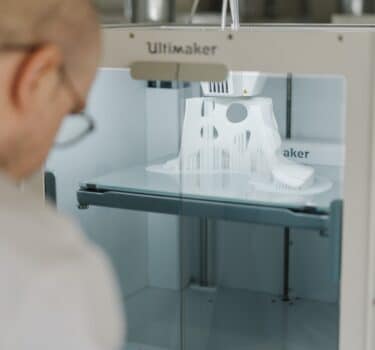
5. Digital Light Processing
DLP printing is quicker than other techniques because it doesn’t use a high-powered laser beam. All the layers are uncovered instead of following a zone’s cross-part, as in selective laser melting.
Basic applications of Digital Light Process printing are in creating infusion-shaped polymer models, amplifiers, dental purposes, and adornments. Once the functional prototypes are complete, you will see that the surface finish is smooth and highlights the subtleties of the object.
But the only downside is that it isn’t the strongest technique for 3D printing and is unsuitable if you want to use the support materials as alternatives to metal parts.
6. Multi-Jet Fusion
Compared to direct laser metal sintering, multi-jet fusion uses nylon powder to create useful components for plastic and metal parts. Instead of sintering the powder, MJF employs inkjet clusters to apply melding specialists to the nylon powder bed. It also has a warming component to fuse the different layers.
You can predict the outcome of the finished product with accuracy while the surface finish and complex structures are completed faster. But especially pleasing is the affordable price of this 3D printing technique, thanks to the quicker fabrication time, which lowers creation costs.
What makes MJF different from traditional manufacturing processes and functional parts created by other 3D printing techniques is that it doesn’t sinter, deposit, or cure the build material. It doesn’t employ point-wise deposition as the heated nozzle expels tiny droplets of liquid photopolymer resin to solidify the replica using UV light.
After the completion of one layer and its thickness, all subsequent layers are less thick, and the printer repeats this process till the object is ready. Another noteworthy aspect is that the MJF technique deposits the build material quickly by following specific lines.
This differs from other techniques that use a single point to follow a path around the cross-sectional layer. For MJF to prove its worth, it’s essential to take out a dissolvable material during the post-handling phase for a smooth printing experience.
Benefits Of Multi-Jet Fusion
It’s one of the few printing techniques to create objects and functional parts with several materials in full tone. Even better is that it can fabricate numerous objects in one line without hampering build speed.
Ensure that all the models are arranged properly and with adequate spacing, and watch as MJF 3D printing creates parts faster than several manufacturing technologies.
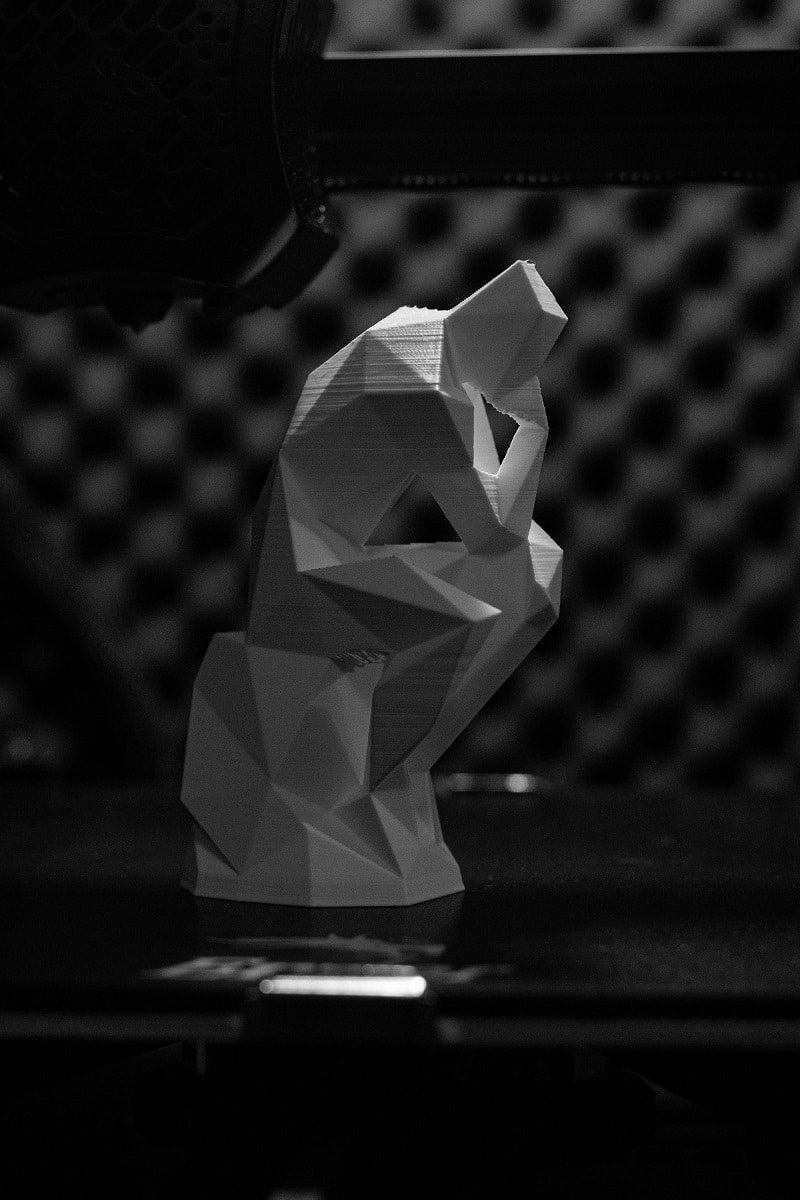
7. Direct Metal Laser Sintering
When you need to create parts made of metal, few techniques can match the efficiency delivered by metal 3D printing. Among them, Direct Metal Laser Sintering is a low-cost technique to reduce multi-part assemblies and metals into one component to create lightweight parts.
These parts have hollowed interiors and internal channels, but even then, each component is quite dense and suitable for production or prototyping. When done right, the finished objects can be comparable to traditional metal production techniques, such as casting and machining.
You can even design metal components with complex geometries, which proves useful in medical applications to design parts similar to the organic structure.
8. Electron Beam Melting
Another popular metal 3D printing technique is electron beam melting, whereby an electron beam melts the metal powder and is controlled by electromagnetic coils. The electron beam heats the printing bed by maintaining a vacuum-like state during the development phase. And depending upon the material, you can alter the temperature to which the metal is heated.
9. Polyjet
Polyjet is a plastic 3D printing technique that can create a layered structure of different parts with varying properties. The materials and tones will mirror the original object; architects use this technique for creating elastomeric prototypes and over-molded parts.
At this point, let us tell you that when the design consists of a single piece of sturdy plastic, choose either SLS or SLA printing techniques as they prove pocket-friendly. However, when the design consists of silicone rubber or an overmolded prototype, you won’t need to spend much money on tooling during the initial stage of development.
You can bring the design to fruition quickly while cutting costs.
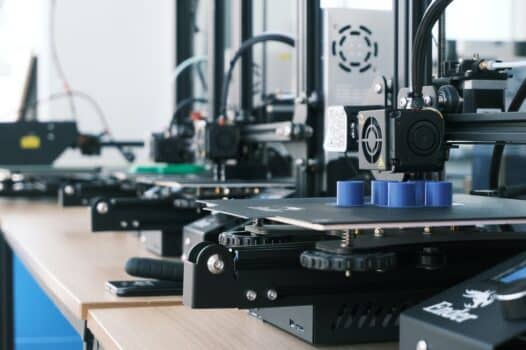
Benefits Of 3D Printing
Although we have mentioned some of the benefits of 3D printing in passing, here’s a lowdown on this popular manufacturing technique.
A. Price and Affordability
The price of 3D printing is less than injection molded or traditional printing processes. You won’t need multiple pieces of equipment, as the same component can be used for prototyping, creating complex geometries, and printing.
B. Fast
While traditional printing techniques take several days to deliver the parts, 3D printing completes the same task with precision in a few hours. You can create functional prototypes, one-off concept models, and parts for production testing.
C. Lower Risk
There are fewer errors after manufacturing parts with 3D printing, which helps businesses test their prototypes since they are similar to the original product. Hence, companies can avoid tooling changes or costly revisions later.
D. Customization
Certain parts, such as organic shapes, microchannels, and overhangs, are challenging to replicate with traditional printing. But, thanks to 3D techniques, you can design complex objects without hassle, including bicycles, clothes, and shoes.
Moreover, you can change the printing needs based on the product type and alter the objects’ design as per specific needs.
Types of 3D Printing Conclusion
In today’s age, contacting a 3D printing service for businesses is essential to streamline production and increase efficiency. While traditional printing still has its uses, the convenience offered by 3D printing is unmatched.
Modern innovations employ a combination of traditional and 3D printing to design parts that satisfy specific business demands. Moreover, high-resolution 3D printers have become more affordable recently, which reduces the need for costly maneuvers and tooling.
And with special resins, you can get more out of a 3D printer even when using it for in-house fabrication.


